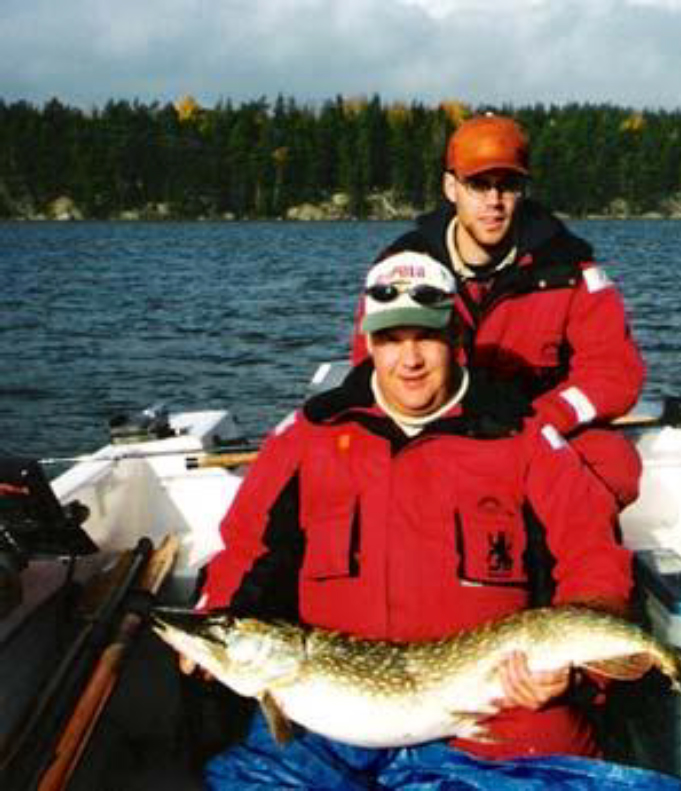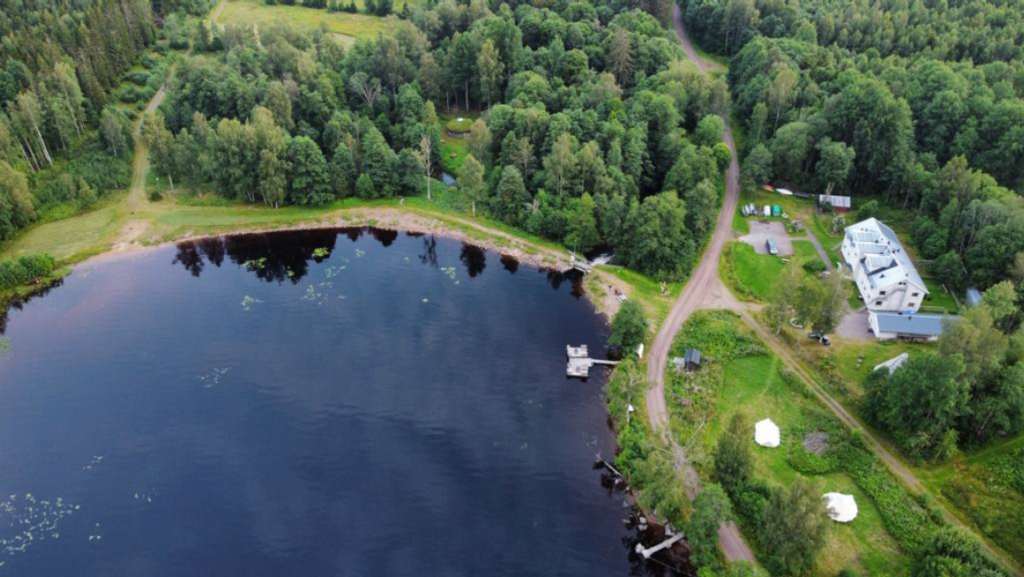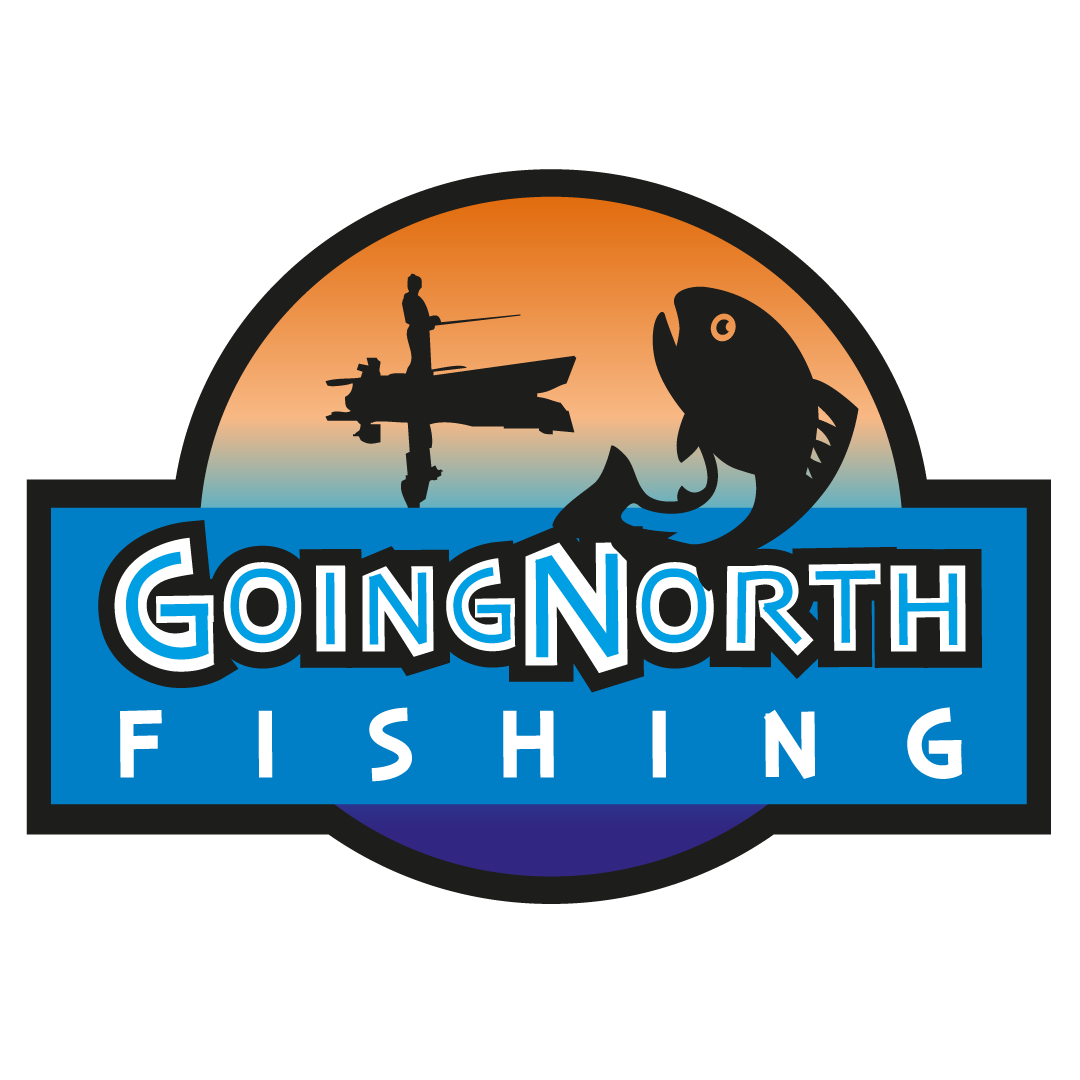Fishing for pike, zander, bass or whitefish in Älvsbacka. Whether you’re a beginner or looking for a bit of a challenge, Älvsbacka has something for everyone. You can fish in Sweden on the large lakes such as the Gräsmången or in the smaller Lersjön. The Östra Örten is a large and in some places quite deep lake. In addition, there are a number of beautiful ponds in the woods.

Learn more about fishing in Sweden

From Fyrbo Guesthouse you have a direct view of Lake Gräsmången with its crystal clear water. Large pike and perch are present here and all kinds of white fish. Try bait with natural colors such as green and blue in the summer and something bolder, for example orange in the spring and autumn.
Östanåsån flows out on the south side of the lake and lands in Lersjön after about 1.5 km.
In Lersjön with humus-colored and slightly turbid water, the angler has good opportunities to catch pike, zander, perch and all kinds of white fish. Try bait with slightly bolder colors such as yellow, orange or red, which are clearly visible in the water.

On the south side of the lake you arrive in Östra Örtenvia, a 50 m wide strait. The environment varies greatly, from rocky deep slopes to leafy reeds. In the northern parts around the swimming area and the church, the lake is shallow with several exciting peaks, where pike, zander and bass thrive. Further south in the lake it gets deeper with real slopes to fish from. In summer, when the water is heated, don’t forget to try the open water too, where pike and zander hunt for small fish swimming on the surface, very exciting on warm summer evenings.
Which fish in Sweden
In Sweden you can catch about 37 types of fish, ordinary and noble species. The largest of these are pike, zander and bass, salmon, trout and grayling in fast flowing water.
Pike

The pike is an outspoken predatory fish and its only natural enemy is usually other larger pike. A pike can ingest a fish that is up to half its own size. In general, the pike mainly eats smaller fish, but if given the chance, it also eats other animals, e.g. small birds, voles or reptiles.
fishing tips
The pike lives alone and defends its feeding grounds, which it prefers to keep near plant stands where there is sufficient bait. In between he makes hunting trips, and sometimes pauses at e.g. a growl. Vary your fishing and look for the pike. The really big pike are usually between 5 and 10 meters deep, but normal pike can sometimes go very shallow. Therefore, fish both on the surface, near the coast and around shallow water, reeds and deep edges. If the wind has been blowing in one direction for several days, pike may gather on the side where it is blowing and wait for its prey with its head “against” the wind.
Pike fishing in Sweden with lures
Most anglers fish for pike with lures. The lure is cast in with the casting rod and slowly reeled in. By bringing in the lure, the lure will move and imitate a fish. The movement of the lure is not just going forward. Lures are attractive to pike precisely because it twists, shakes or waddles. In this way the lure imitates, as it were, a sick fish and the pike catches the eye more quickly. There are different types of lures that you can use for pike fishing. Which lure works best depends largely on the circumstances. In shallow water you often catch the best pike with floating plugs or spinners. Deep-diving plugs, sinking plugs and shads work best in deep water. The color you choose for pike fishing can determine success. Natural colors often work well in clear fishing water. If the fishing water is cloudy, it is better to choose lures with a bright color.
Pike fishing with dead bait
Pike fishing with dead bait means that as a pike angler you use a dead but fresh bait fish as bait. Especially large pike can be caught with dead bait. This is because catching a dead baitfish costs the pike little energy. This is important for the larger and heavier pike because they have to eat a lot to keep their energy up. These pikes will therefore be careful with their energy. Bait fish that are great for pike fishing are the roach and blei. There are several ways to fish with dead bait. You can offer the baitfish with lead on the bottom or on a float. With lead on the bottom you fish for pike like many carp anglers do. You throw in your baitfish and wait for it to be caught by the pike. An electronic bite alarm indicates when you have a bite. Fishing for pike with the float means fishing by sight. You ensure that the distance between the float and the baitfish is such that the baitfish hangs just above the bottom of the fishing water. Preferably, the baitfish takes up a horizontal position so that it appears as if it is floating normally through the water. If you are fishing for pike with dead bait and you have a bite, it is important not to wait too long before hitting. Strike a maximum of 10 seconds after the bite. This prevents the pike from swallowing the baitfish.
Pike fishing with live bait
In Sweden you can still fish for pike with live bait. Most pike anglers do this with a float. The baitfish is hooked into its back and thrown in along with the float. To keep the baitfish at the right depth you can use a lead of a gram or 10 to 15. As soon as the pike takes the baitfish, he will pull the float under and the angler must catch on. Just like with dead bait pike fishing, don’t wait too long. Switch on after a maximum of 10 seconds. As a good baitfish it is best to use a live roach or blei. Be careful not to let the baitfish swim too close to aquatic plants or obstacles. Then you have a chance that he will swim himself. And to properly store and transport the bait fish, a bait kettle with an oxygen pump is recommended. This keeps the bait fish in excellent condition.
Zander

Zander thrives best in slightly larger lakes and brackish water archipelagos, but also in weakly flowing waterways. Cloudy, shallow and hot is the ideal of the zander, as it is a warm water fish. It hunts partly by sight, where it can “sneak” for prey fish in murky and night-dark waters. The zander does have a preference for smaller prey compared to the pike, which can devour prey up to a third of its own body weight.
fishing tips
Zander fishing in Sweden with lures
Especially in the summer and autumn you have a good chance of catching a pikeperch. There are many types of lures that you can use to fish for zander. Plugs, softbaits, spinners, and also spoons are regularly used with success. Good plugs are often slender plugs that run deep enough to be fished just above the bottom. So take a good look at how deep a lure runs and choose one that can be fished deep enough.
Softbaits are another type of lure that you can put to good use. You can use shads, twisters, and all kinds of other softbaits.
Fish these in with jumps over the bottom. That is a successful technique. If you are in a boat you can let them bounce gently over the bottom right under the boat. This so-called vertical is a favorite of many pike-perch anglers. But you can also fish pike perch with spinners and spoons. Again it is important that they are fished deep enough. Always fish for zander with a hooklength.
Fishing for pike perch with dead bait
With a small dead fish on a float or with a lead on the bottom you can catch pikeperch very well. Fish of about 10 centimeters are often the best. For example, consider a dead roach.
The nice thing about pen fishing for zander is that we are a bit more flexible. Various places can be fished with ease without having to move a lot of fishing equipment. In addition, fishing with the pen for zander has the advantage that you can make the bait move a bit. This works best if we let the baitfish or piece of fish float about 10 to 20 centimeters above the bottom. If you give the float every now and then every few minutes, the baitfish will move with it and that can attract the zander. If you are going to fish with the pen, it is important that you fish in water where you can reach the deeper parts in this way. In the winter the pike perch is deep and we will have to get to this. If the distance is too great, then the method described above to catch pike perch on the bottom is a better option.
Perch

The perch is a typical predatory fish that often hunts in schools. If you see schools of frightened little fish jumping into the surface, there may be a bigger bass chasing small fish! If you have one, chances are you’ll get more, take advantage and be quick before the school moves to new hunting grounds.
fishing tips
De beste visserij op baars is tijdens de hoogzomer en vroege herfst. De vis houdt van warm water en gaat vaak naar plekken waar hij kan staan en zonnebaden, b.v. op relatief ondiep water bij vegetatie en riet, omgevallen bomen en vazen, waar ook volop voedsel is.
Fishing for bass in Sweden with the worm
The best bass fishing is during high summer and early fall. The fish likes warm water and often goes to places where it can stand and bask, e.g. in relatively shallow water near vegetation and reeds, fallen trees and vases, where there is also plenty of food.
When fishing perch with worms, it is important to offer the worms just above the bottom. It doesn’t hurt to move the worms every now and then. You do this by giving the float a few taps with the rod tip. To attract the perch extra, you can throw some pieces of worm into the water. This attracts the bass. Also bait can sometimes help, but don’t forget that you also attract other fish species. If you really want to go bass fishing then it might be better to skip this one.
perch fish
Spinners are a very good lure for bass fishing. Especially smaller spinners with a red color do well. Combined with a not too stiff spinning rod, a good spinning reel, a thin braided line or a nylon line of 18/00 they are a solid piece of equipment for bass fishing. If there is a good chance of pike, it can’t hurt to use a leader. This really doesn’t deter the bass and you prevent a pike from running off with your spinner. Try to fish the spinners at different depths. Some irregularities in the speed and movement of the rod tip (this can be vertical or horizontal) regularly ensure success when fishing for bass.
Fishing perch with plugs
Perch is a real predator and not afraid to catch larger fish. That is why the somewhat larger perch in particular can be caught well with lures plugs. Plugs with a length of 4 to 7 centimeters are fine for bass fishing. Especially plugs with brighter colors do well on perch, but plugs with perch colors and perch stripes often do well. This is because the perch, like the pike, is a cannibal and likes to eat smaller conspecifics. Make sure that you match the choice of your lure to the depth of the fishing water. In shallow water, choose floating or shallow diving plugs. For deep fishing water, choose sinking or deep diving plugs.
Before you go fishing, think about your general fishing equipment:
- Phone or camera to record the fish caught in Sweden
- Wind and waterproof clothing/warm underwear/warm shoes
- Anti-insectspray
- Sunglasses, preferably polarizing
- sunscreen
- Cap
- Check material / supplies (rods, plugs, fishing line, long nose pliers, etc) before you go fishing
- landing net
- Bring enough food/drink.
Use this map to plan your route to our Fyrbo Guesthouse.
